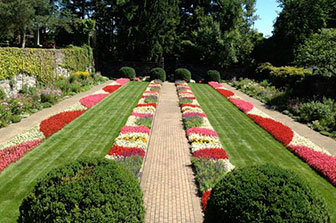Created in 1915 by Cranbrook founder George Booth and his father, Henry Wood Booth, Cranbrook’s Japanese garden is among the oldest in North America. Although the garden today remains a place of inspiration and renewal for visitors, the space itself needs rejuvenation. With the support of the Consulate General of Japan in Detroit, the Cranbrook Center for Collections and Research has received a grant from the Japanese Ministry of Land, Infrastructure, Transport and Tourism (MLIT) that will start the necessary work.
“There are six gardens worldwide that received one of these grants in 2018,” said Gregory Wittkopp, Director of the Cranbrook Center for Collections and Research. “We are very fortunate to be one of these six gardens.”
The MLIT grant provided funding to bring six gardeners to Cranbrook from the Japan Federation of Landscape Contractors. Over the course of six days, the gardeners helped transform one corner—the lily pond cascade—into what will once again be a place of beauty and contemplation. This work is the first of a six-phase master plan for the entire garden that is being designed by Sadafumi Uchiyama, garden curator of the famed Portland Japanese garden in Oregon.
Wittkopp said that Cranbrook “wants to respect the history and legacy of the garden, while also taking the opportunity to enhance it. Our goal is to make sure that this becomes a garden that is actively used for a variety of reasons, and that people find meaning here.”



